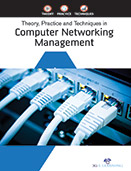Chemistry

Over the past two decades, computer technology has been swiftly evolving, typically because of the high demand for personal and institutional computers. Whereas this trend is likely to endure for a few years, Personal Computers (PCs) will slowly lose their position as the main driving factor behind the computer technology. These evolving devices, which consist of Internet appliances and smart vehicles, will pressure the computer industry to continue their current trend and deliver faster, denser and cheaper computers. A computer network is a set of computers connected together for the purpose of sharing resources. The most common resource shared today is connection to the Internet. Other shared resources can comprise a printer or a file server. The Internet itself can be considered as a computer network. The networking technology behind an Internet appliance is one of the most important factors in determining its usefulness and ease of use. Most of today’s networking uses wired infrastructure such as already existing phone cable lines, or dedicated lines. However, wireless networking is becoming less expensive and more affordable; therefore next generation of mass-market personal computing equipment will be some form of small internet-connected mobile device. Irrespective of the networking choice, future Internet appliances will be based on embedded computing systems. Traditionally, embedded systems have been designed using very minimal hardware with slow or even obsolete 8- bit microprocessors. All that is changing, and the next generation of devices will probably sport fast, full-featured, up to 128-bit processors.
“Theory, Practice and Techniques in Computer Networking Management” is an accessible, easy-to-understand introduction to the language of the Internet, featuring clear, concise explanations. This book has a comprehensive coverage with expanded coverage of the topics of utmost importance to networking professionals and students, including P2P, wireless, network security, and network applications. The each chapter contains specific key notes, learning objectives, comprehensive indicative content, tables, and illustrations together with the topic areas.